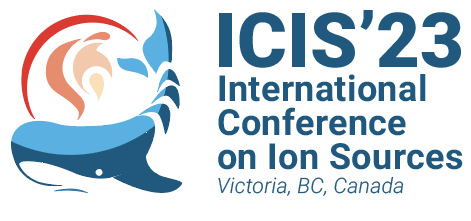Speaker
Description
D-Pace is developing a 13.56 MHz RF ion source capable of producing negative ions (H$^-$, D$^-$). The ion source is a hybrid design between the TRIUMF-licensed filament ion source and the RADIS ion source licensed from the University of Jyväskylä. An Inductively Coupled Plasma (ICP) is generated inside the plasma chamber using a planar spiral external antenna, powered by an RF power supply. The RF power is coupled between the antenna and the plasma through an Aluminum Nitride (AlN) dielectric window.
The RF ion source is expected to offer a 'maintenance-free' operation compared to a filament ion source due to the absence of any filaments that erode in the plasma. However, the RF ion source is challenged by the erosion of the copper plasma chamber during the operation. This leads to the deposition of copper layers on the plasma-exposed surface of the AlN window. These metal deposits decrease the power coupling from the spiral antenna to the plasma and deteriorate the beam current from the ion source. Different experiments were performed to control the deposition of copper on the dielectric window in an H$_2$ plasma.
The copper deposition can be reduced by maintaining the surface of the dielectric window at high temperatures. Operation of the ion source at high H$_2$ gas pressures ($\geq 20$ mtorr) can also reduce the formation of copper layers considerably. Moreover, it was found that the erosion is directly related to the value of the electric potential applied to the plasma electrode during the beam extraction. A reduction in the ratio of the plasma exposed area of the plasma electrode to the grounded surface area of the plasma chamber to $\approx$ 0.03, reduces or nearly completely eliminates the formation of copper layers on the dielectric window. A combination of these solutions is incorporated into the operation of the RF ion source and the latest results are presented in the paper.
| Funding Agency | MITACS |
|---|---|
| I have read the Code of Conduct to attend ICIS2023. | Yes |

